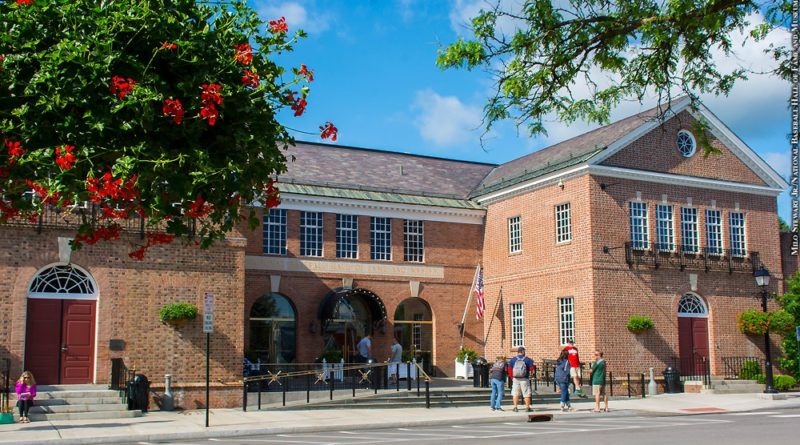There will be no attempt to sugarcoat this one. Consider it a PSA, one of those public service announcements to bring attention to a worthy cause.
The timing is perfect. The National Baseball Hall of Fame and Museum is celebrating its 80th anniversary, and this story is all about the experiences and benefits of having even the remotest of connections to its hallowed grounds. If you’d like to call it a “puff” piece, be my guest.
If you are a fan of baseball and its Hall of Fame, chances are you’ll enjoy what follows. If you’re one of those who thinks it’s just a glorified museum … well, chances are you’ll turn the page — or click another link. If you’re in that second group, however, be advised that the museum is merely the building that houses the plaques. The Hall of Fame itself is as unique a fraternity as you’re likely to find, and even the slightest connection has its rewards.
In the seven decades that I’ve been involved in this business, I’ve stored countless cards from countless organizations in a seldom-used rolodex. The only one I carry and treasure more than my lifetime card from the Baseball Writers’ Association of America — and the only one I pay for — is the one that identifies my annual membership in the Baseball Hall of Fame.
There are a lot of perks in this business, and for me personally the idea for this column arrived with one of the ones I get from my Hall of Fame membership. It came via the latest edition of “Memories and Dreams,” the Hall of Fame magazine that subscribers get six times a year and never fails to deliver engaging and enlightening stories about the game.
This summer issue of “M&D” could be subtitled “Trains, Planes and Games,” as two of its articles chronicled how baseball and railroads came of age together and how future Hall of Famer Bob Feller helped move baseball toward air travel with an innovative barnstorming tour featuring Major League and Negro League All-Star teams.
In the jet age we live in today, there is only a minority of fans who remember that the “original 16” baseball teams were concentrated in basically the upper quadrant of the United States. Even with Boston, Philadelphia, Chicago and St. Louis each having two teams, the New York metro area three along with single teams in Washington, Pittsburgh, Cleveland, Detroit and Cincinnati, travel was a major priority.
Convenient travel made baseball and trains necessary partners, which Steve Buckley highlighted in his story, “Diamonds and Railroads,” detailing how regional rail service was a catalyst for the early years of baseball. Sunday doubleheaders and Monday off days were at least partially the product of the baseball-railroad partnership.
Though the storytellers are long gone, tales of train travel during baseball’s early years have endured, sometimes evoking feelings of nostalgia. And the feeling isn’t completely lost, as teams still occasionally use trains in the Eastern Corridor, especially on trips that move teams between New York, Philadelphia, Baltimore and Washington.
Before train travel became almost obsolete, it was Feller, a Navy veteran but an enthusiastic aviator, who helped introduce air travel — much to the chagrin of some owners at the time. In addition to being the best pitcher of his time, Feller was also a shrewd businessman, as Bill Francis highlighted in another “Memories and Dreams” story.
Having missed almost four full years while serving in the Navy during World War II, Feller put together what was probably the most exhausting and innovative barnstorming trip ever following the 1946 season. It was his first full year following the end of the war, and Feller compiled a 26-15 record while pitching a staggering total of 371 innings.
For an encore, and reportedly an extra $80,000, he put together a 35-game barnstorming tour that featured “Bob Feller’s All-Stars” against “Satchel Paige’s All-Stars.” Games were played in 27 cities starting Sept. 30 and went coast to coast, so train travel was out of the question.
Feller chartered two DC3 airplanes to transport the teams around the country and, even though tickets were in the $2-$4 range, most if not all participants made more than they did the entire season. “Bullet Bob” or “Rapid Robert” (take your pick) got the promoter’s share. Despite those 371 innings he threw during the regular season, Feller earned his money by pitching to at least a few hitters in every game except for one he had to miss because of a previous commitment.
He made a few owners nervous in the process (Ted Williams and Hal Newhouser were reportedly paid $10,000 to skip the junket), but in addition to padding his bankroll, Feller introduced air travel to baseball more than a decade before it would become the new norm.
So where are we going here? Remember, it’s a Public Service Announcement. Here comes the pitch:
Those are just two of the many highlights in the latest edition of “Memories and Dreams,” my must-read six times a year. The subscription comes with any level of membership in baseball’s Hall of Fame, which starts at $50 per year. The magazine itself is worth it — all the other perks are a bonus.
Oh yeah, one other thing — membership includes free admission to the Baseball Hall of Fame and Museum. For a year.
Ever been to Cooperstown? You should go. Your first trip will be unforgettable. It’ll be different than my first trip, but it will make you want to go again.
Looking for a destination? Your trip to Cooperstown won’t be quite like this, but it’ll be the road trip of a lifetime.
Guaranteed.
Jim Henneman can be reached at JimH@pressboxonline.com
Photo Credit: Milo Stewart Jr./National Baseball Hall of Fame
Issue 255: June/July 2019

